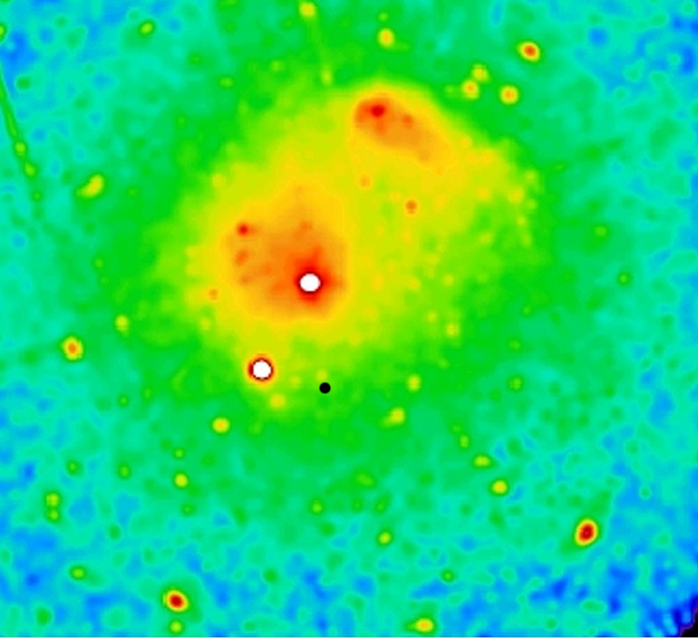
 Credit: Fabio Gastaldello (INAF-IASF Milano and University of California Irvine) and ESA
Credit: Fabio Gastaldello (INAF-IASF Milano and University of California Irvine) and ESA
Dance of the Double Cluster
Massive objects move around each other in obedience of the laws of gravity, as described by the lawgivers, Isaac Newton and Albert Einstein. These laws are precise on a wide range of scales - artificial satellites around the Earth, natural satellites around their planets, planets around their stars, one star around another. On larger scales, something seems amiss. Scientists have explained the observed discrepancies as an additional source of gravity, rather than an implication of an amendment to the laws. Observing gravity on larger and larger scales provides important tests of our understanding of this most essential force. The image above shows the behavior of gravity on one of the largest scales imaginable, the scale of clusters of galaxies. This object, a double cluster of galaxies known as Abell 2028, shows two entire groups of galaxies in orbit around each other. The best way to study this interaction is to observe the X-ray emitting gas held bound by the cluster, since (surprisingly) this gas outweighs the "normal" (non-dark) matter visible in optical images of the individual cluster galaxies. The image above is a false-color X-ray image of Abell 2028 taken by the cameras on the XMM-Newton observatory. The X-ray image reveals surprising details of the interactions between the two clusters, like the "comet-like" tails produced as they move around each other. By measuring the X-ray emitting gas distribution, and the dynamics of the X-ray emitting gas in two sub-clusters, lets us extend our understanding of the theory of gravity and matter (both visible and invisible) and helps define how gravity shapes the Universe as a whole.
Published: April 25, 2011
<
HEA Dictionary ● Archive
● Search HEAPOW
● Other Languages
● HEAPOW on Facebook
● Download all Images
● Education ● HEAD
>

Each week the HEASARC
brings you new, exciting and beautiful images from X-ray and Gamma ray
astronomy. Check back each week and be sure to check out the HEAPOW archive!
Page Author: Dr. Michael F. Corcoran
Last modified Monday, 26-Feb-2024 17:33:52 EST


